Day of the Dead tattoo art is a stunning and vivid cultural phenomenon that has captured the hearts and imaginations of tattoo enthusiasts around the world. Rooted in rich traditions and vibrant customs, these tattoos evoke a deep sense of remembrance and celebration of life. You might notice that many designs burst with color, intricate details, and symbolic imagery that pays homage to the past while embracing the lively spirit of the present. This art form combines history, emotion, and aesthetic prowess into one irresistible package that is both visually appealing and deeply meaningful. Each element represents layers of symbolism that remind us of the cyclical nature of life and the importance of cherishing memories. The interplay of vibrant colors, bold lines, and subtle shading creates a piece that is as much a personal statement as it is an artistic masterpiece. For those who wear these tattoos, it often becomes a permanent tribute—a blend of personal stories and cultural narratives embedded on the skin. Whether you’re a longtime admirer or a newcomer curious about its origins, the allure of Day of the Dead tattoo art lies in its ability to encapsulate the beauty of life, the inevitability of death, and the enduring power of memory in a celebratory tribute that invites conversation and contemplation.
History and Cultural Roots of the Day of the Dead Tradition
The history of Day of the Dead tattoos is as colorful and rich as the tradition itself, stretching back through centuries of cultural evolution and celebration. This practice emerged from ancient Mesoamerican rituals, where society held a deep respect for the departed and their continued involvement in the living world. Historically, the Day of the Dead, or Día de los Muertos, is a time when families honor their ancestors with offerings, vibrant decorations, and expressive altars that speak volumes about cultural values and beliefs. It’s a movement that came about from a fusion of indigenous practices and later influences introduced during colonial times, making it a tapestry woven with traditions that have been handed down generation after generation. As you immerse yourself in the tradition, you might see influences from Aztec practices and spices of European customs that collectively celebrate the continuity of life through art and remembrance. In tattoo form, these historical symbols are more than just imagery—they’re powerful emblems that connect wearers to a proud past, emphasizing cycles of life and death that feel both sacred and wonderfully human. Each tattoo design serves as a bridge linking personal narratives to universal themes of loss, joy, and eternal remembrance, inviting anyone who sees them to explore a deeper connection with the cultural heritage that inspires them.
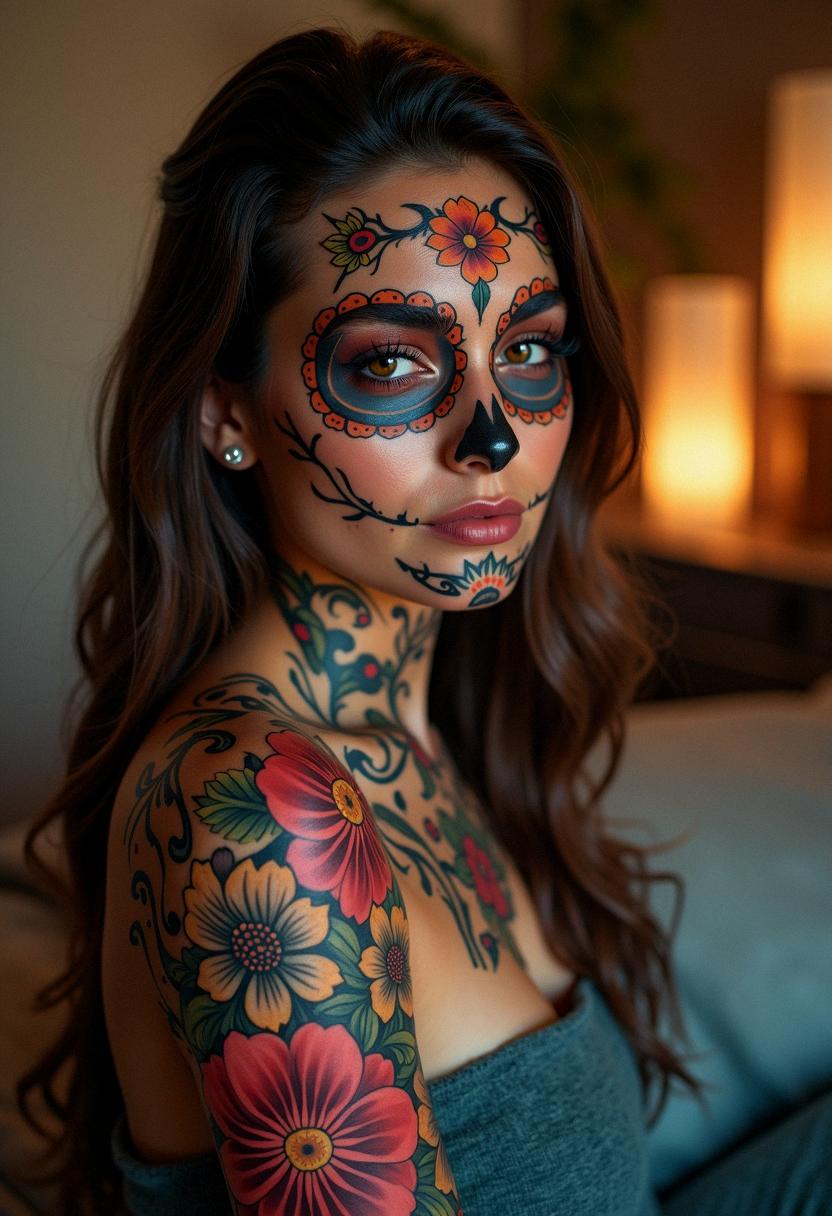
Meaning and Symbolism Behind Day of the Dead Tattoos
When you take a closer look at Day of the Dead tattoos, you quickly realize they are loaded with layers of symbolism that go far beyond mere aesthetics. These tattoos embody the essence of celebration, remembrance, and the timeless bond between life and death. They frequently feature bold imagery such as sugar skulls, marigolds, and intricate patterns that might at first glance seem whimsical, but each has deep-rooted meanings. The sugar skull, for example, is a poignant reminder of the transient nature of life, beautifully encapsulating the idea that death is not to be feared but rather acknowledged as a part of life’s rich tapestry. Marigolds often symbolize the fragility and beauty of human existence, their bright colors lending a sense of energy and hope during times of mourning. As you explore a design that features these elements, you can almost feel the pulse of history and tradition running through it, inviting you to reflect on your own journey and connection to those who have passed on. It’s a unique and personal method to celebrate the cycles of birth, life, death, and rebirth—a visual narrative that speaks directly to the soul. Wearing one of these tattoos is an intimate act that honors both individual memory and collective heritage, reminding us that every chapter of our existence has its own place in the grand story of life.
Key Artistic Elements and Iconography in Day of the Dead Designs
There’s an undeniable charm in the artistic elements and iconography that characterize Day of the Dead tattoo designs. Often, these tattoos are a riot of colors, intricate patterns, and bold imagery that capture your attention instantly and hold it close. You’ll frequently see designs that incorporate elements like detailed sugar skulls, which aren’t just decorative—they are symbolic representations of mortality and the way life and death are intertwined. Marigolds, another prevalent feature, are depicted with vibrant petals and radiant hues that serve as a metaphor for the beauty and transience of life, making them a cherished motif in these tattoos. As you explore these designs, you’ll discover that each component is purposely chosen to convey personal stories, cultural pride, and a celebration of remembered lives. The playful yet profound amalgamation of ornate detailing, whimsical patterns, and deeply symbolic figures makes these tattoos stand out in a sea of designs. They exude a sense of passion and resilience, proving that while death is part of the human experience, it is the celebration of life that truly takes center stage. Artists often use intricate line work combined with bold color splashes to create designs that are both beautiful and meaningful, inviting the viewer to engage in a dialogue that goes far beyond surface beauty and touches on the profound nature of existence.
Personalizing Your Day of the Dead Tattoo: Design Inspirations and Customization Ideas
Deciding on a Day of the Dead tattoo is all about making a personal statement that reflects your own journey, memories, and style. When you begin to personalize your tattoo design, you step into a creative space where tradition meets individuality. Consider elements that resonate with you, be it the emblematic sugar skull, a vibrant marigold, or perhaps even a more abstract interpretation that weaves in your personal story. It’s about taking those historical symbols and adjusting them to fit your unique narrative. Have you ever thought of combining dates or names subtly embedded into the tattoo? That extra touch can empower your design with a lasting personal significance. Customization in these tattoos is also an opportunity to play with contrasting colors or perhaps experiment with new styles like watercolor splashes or traditional line art. The process involves detailed discussions with your tattoo artist, where you brainstorm and refine ideas until the design reflects both the cultural symbolism and your personal memories. The best part is that there’s no one-size-fits-all approach here; rather, it’s a chance to explore your identity while keeping the spirit of the tradition alive. Whether you opt for a minimalist design or something more elaborate that wraps around your arm or back, each element should feel authentic to you, creating a living, breathing piece of art that’s as unique as the life you lead.
Finding the Right Tattoo Artist for Your Day of the Dead Design
Finding the perfect tattoo artist to bring your Day of the Dead design to life is a crucial step in this creative journey. It’s not just about technical skill; it’s about connecting with someone who truly understands the layered meanings behind the symbols you hold dear. Spending time researching artists who specialize in cultural tattoos can make all the difference, and you might find that local studios are brimming with talent eager to discuss the emotional depth behind each piece. When you approach a tattoo artist with a Day of the Dead concept, look for someone who listens actively to your vision and offers insightful feedback based on their expertise. In your conversations, consider asking about their experience with intricate designs and personal customizations, as these tattoos often require a delicate balance of precision and artistic flair. You might also want to observe their previous works, ensuring that their style aligns with the aesthetic and symbolism you envision. Choosing an artist who not only delivers quality work but also respects the cultural heritage embedded in the design is vital. It’s this mutual respect and understanding that will help you achieve a tattoo that is not only visually stunning but also rich with meaning. Taking the time to connect with an experienced professional can drastically improve the overall outcome and create a lasting bond between artist and client, making your tattoo experience a collaborative celebration of life, memory, and art.
Preparation, Process, and What to Expect During Your Tattoo Session
The process of getting your Day of the Dead tattoo is an exciting journey that involves careful preparation, clear communication, and a step-by-step process that ensures you end up with a piece of art that you’ll cherish for years to come. Before your session begins, it’s important to have a detailed conversation with your tattoo artist about the design and its symbolic elements. This initial consultation is where you can express any personal touches or modifications you’d like to incorporate, ensuring that every aspect of the tattoo reflects your story. When the session day arrives, expect a calm and focused environment where the essence of the design is meticulously transferred onto your skin. Many artists take the time to outline the tattoo first, allowing you to visualize the positioning and see adjustments in real time. Once the design is confirmed, the actual inking process kicks off, and it’s common to experience a mix of excitement and a little bit of nervousness. The sensation may vary from one person to another, but many describe it as a series of rhythmic movements rather than a jolt of pain. Throughout the procedure, your artist will check in to ensure you’re comfortable, and you might even find that the conversation flows easily, turning the session into an engaging and memorable experience. Ultimately, the process is as much about preparing your body for art as it is about preparing your mind to embrace a powerful symbol of remembrance and personal expression.
Aftercare, Healing, and Long-Term Maintenance of Your Tattoo
Once the inking has been completed, the journey continues with aftercare, healing, and long-term maintenance of your Day of the Dead tattoo. This stage is equally crucial because it determines how well your tattoo will retain its intricate details and vibrant colors over time. Aftercare begins immediately after your session, with your tattoo artist providing specific instructions on cleansing, moisturizing, and protecting the area from sunlight until it fully heals. Embracing a diligent aftercare routine, including gentle washing and regular application of recommended ointments, sets the stage for proper skin recovery and helps prevent infection. You’ll find that your tattoo not only requires physical upkeep but also an ongoing appreciation of its artistic value. Long-term maintenance might include occasional touch-ups to ensure that the colors remain as vivid as the day they first graced your skin. Staying mindful of your skin’s health by using sunscreens and avoiding overexposure to harsh elements can keep your tattoo looking fresh and meaningful. This phase is a blend of care and self-expression—you’re nurturing a piece of art that holds deep personal and cultural significance. By following a strict yet loving aftercare routine, you ensure that your tattoo remains a pristine and proud symbol of your heritage and individual story for years to come.
Real-Life Stories and Experiences with Day of the Dead Tattoos
Listening to real-life stories about Day of the Dead tattoos reveals an inspiring mosaic of personal experiences that demonstrate the profound impact this art form can have on an individual’s life. Many people share how these tattoos have served as lifelong tributes to their loved ones, acting as permanent memorials that beautifully encapsulate cherished memories. Stories often describe how the detailed imagery of sugar skulls and marigolds guide them through moments of both sorrow and celebration, turning what might have been a painful memory into a vibrant homage to life. Whether it’s a story about reconnecting with one’s cultural roots or a tribute to a family member lost too soon, these tattoos have a way of fostering dialogue and healing that transcends mere aesthetics. As you explore these narratives, you can appreciate the sentiments behind each design, from the initial idea to the final ink, and how deeply personal each mark is to its wearer. Many individuals recount their emotional journey during the tattoo session, emphasizing how the supportive and artistic environment helped them feel empowered and connected to their heritage. It becomes evident that each tattoo tells more than just a story—it encapsulates decades of tradition, love, and remembrance. These real-life experiences serve as a testament to the universal power of art to heal, inspire, and celebrate the beauty intertwined with every loss and every memory.
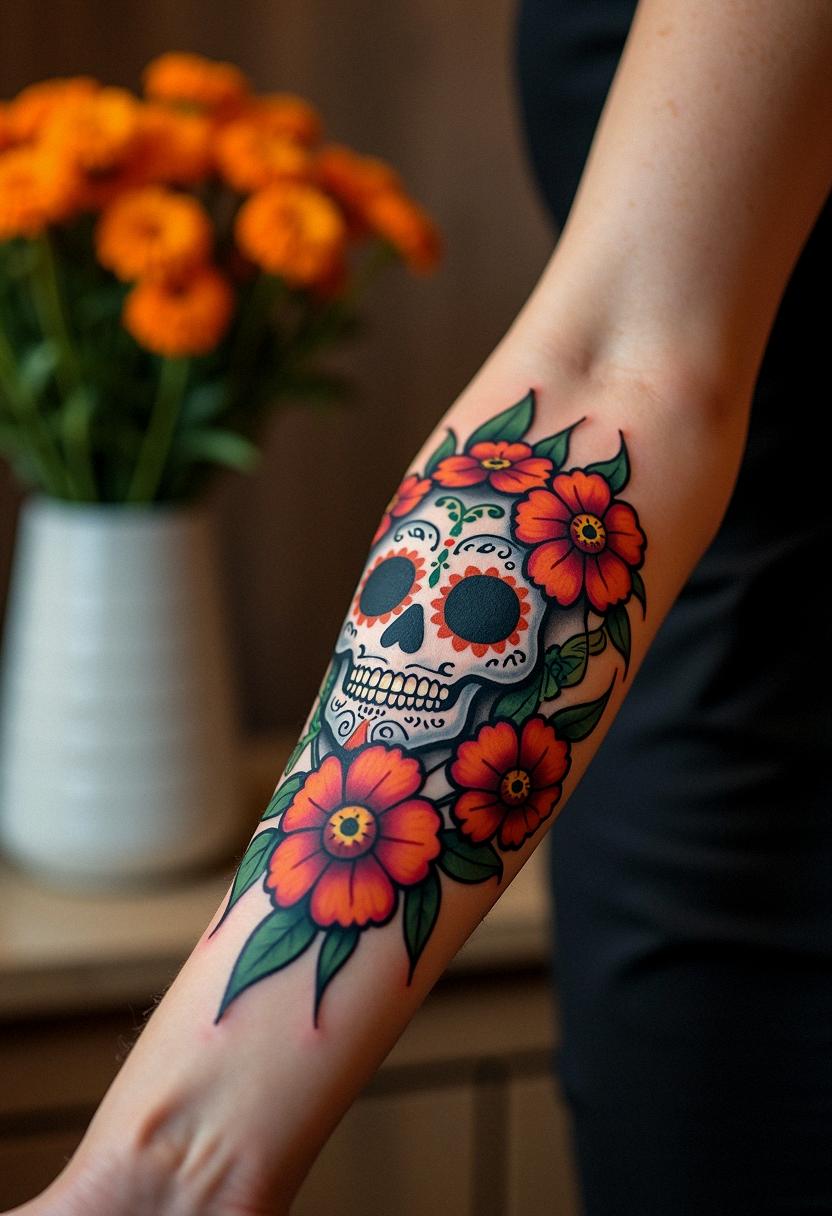
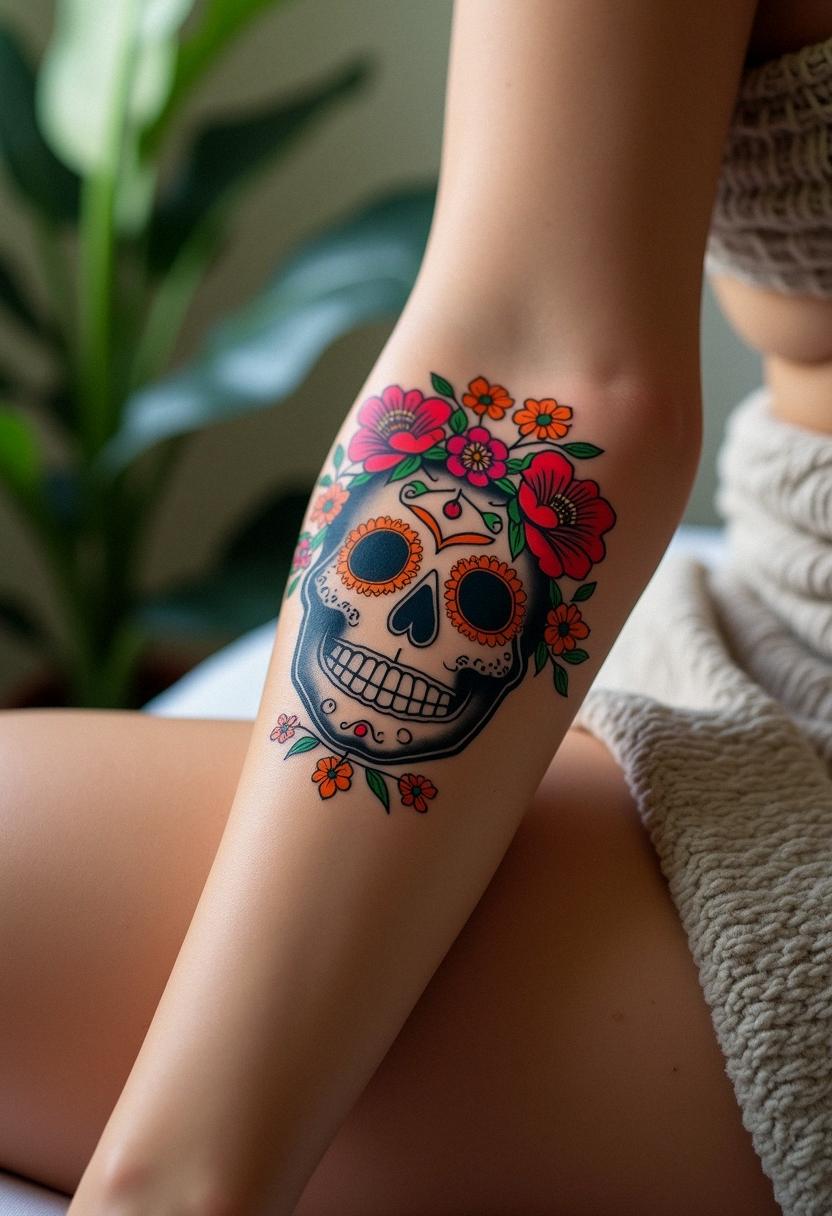
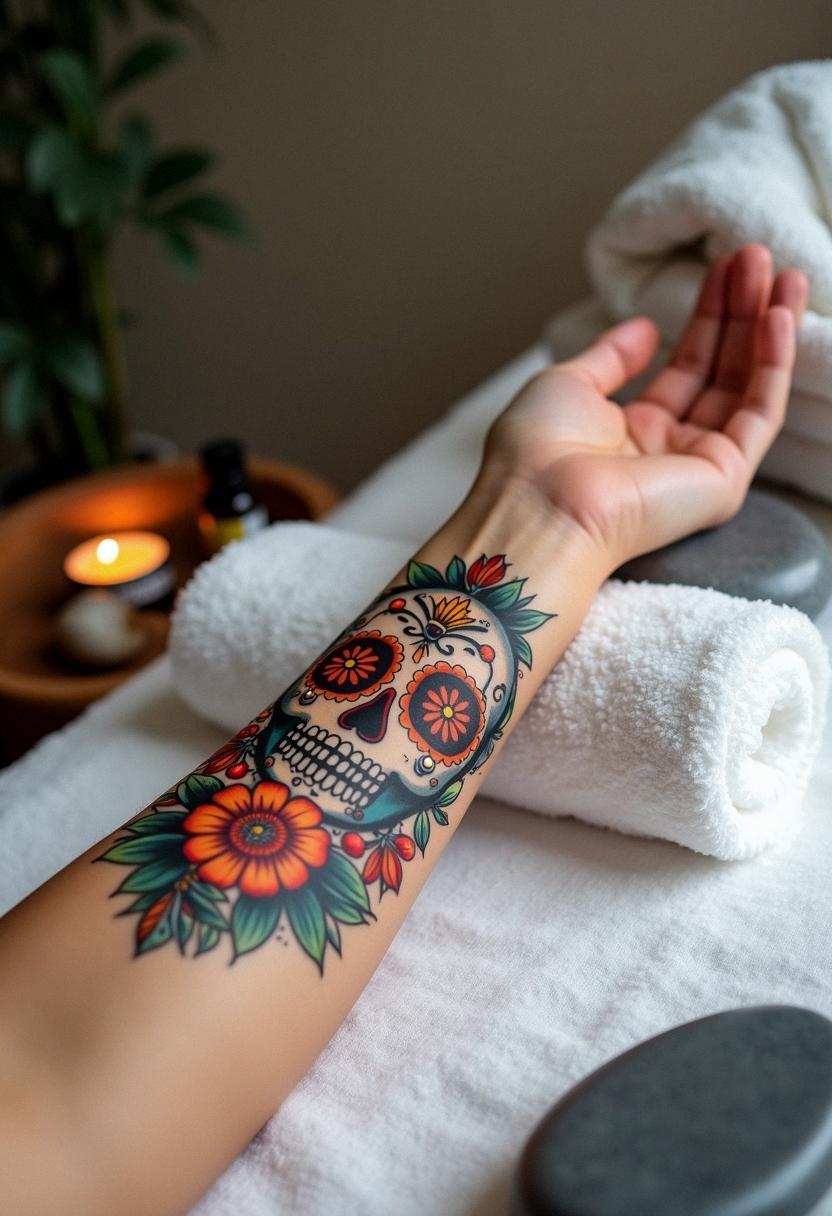
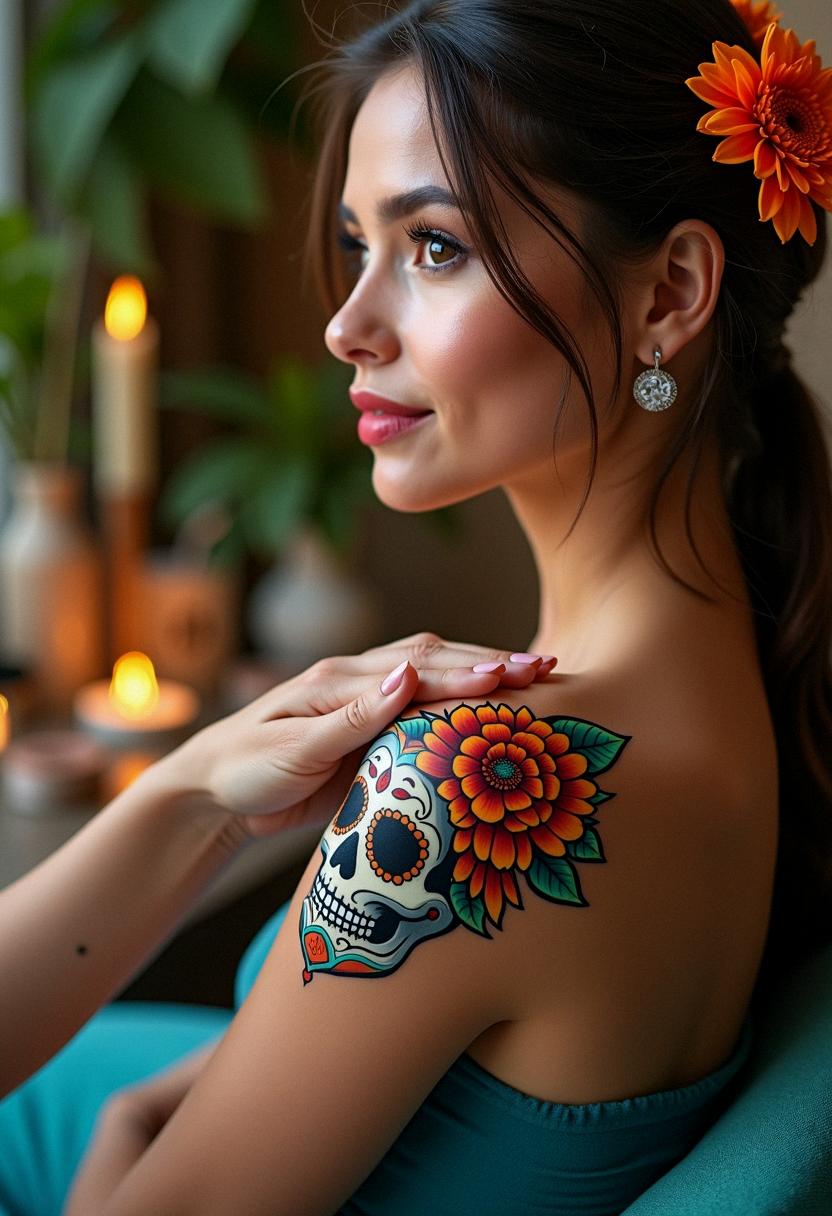
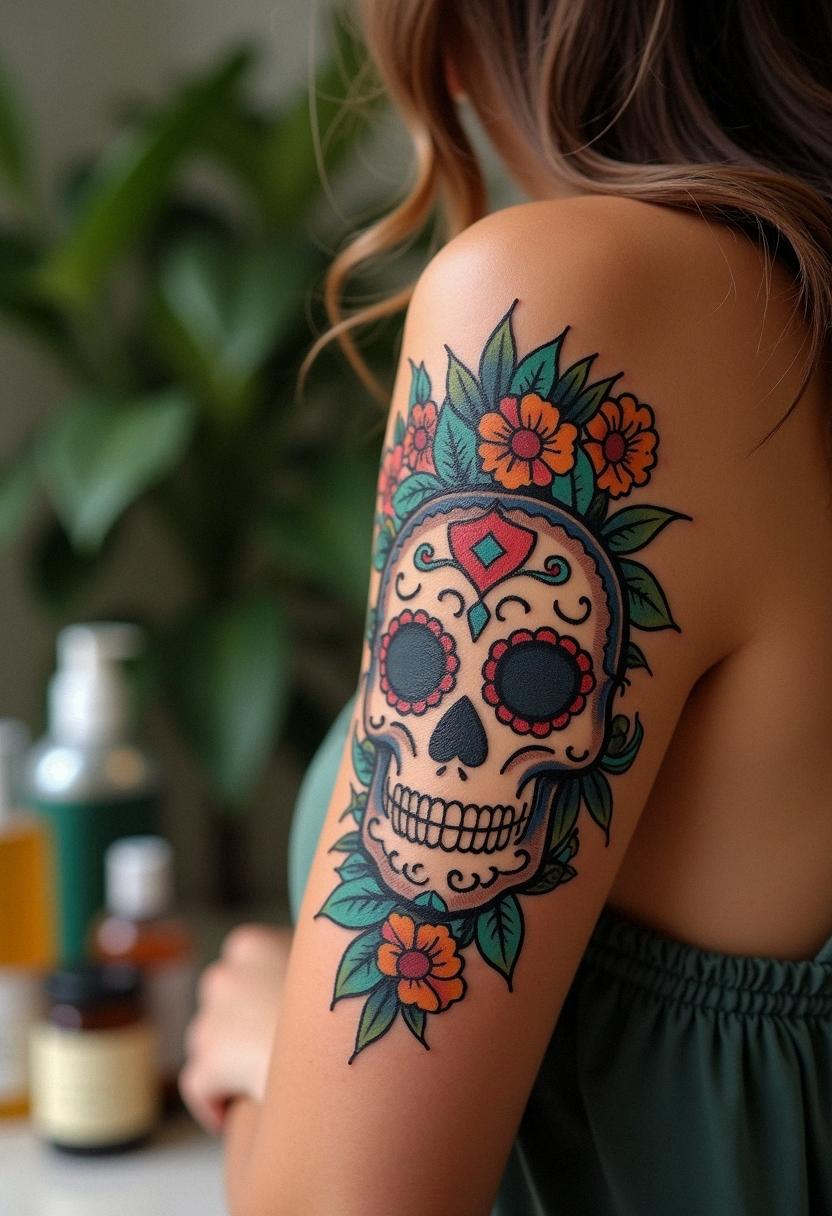
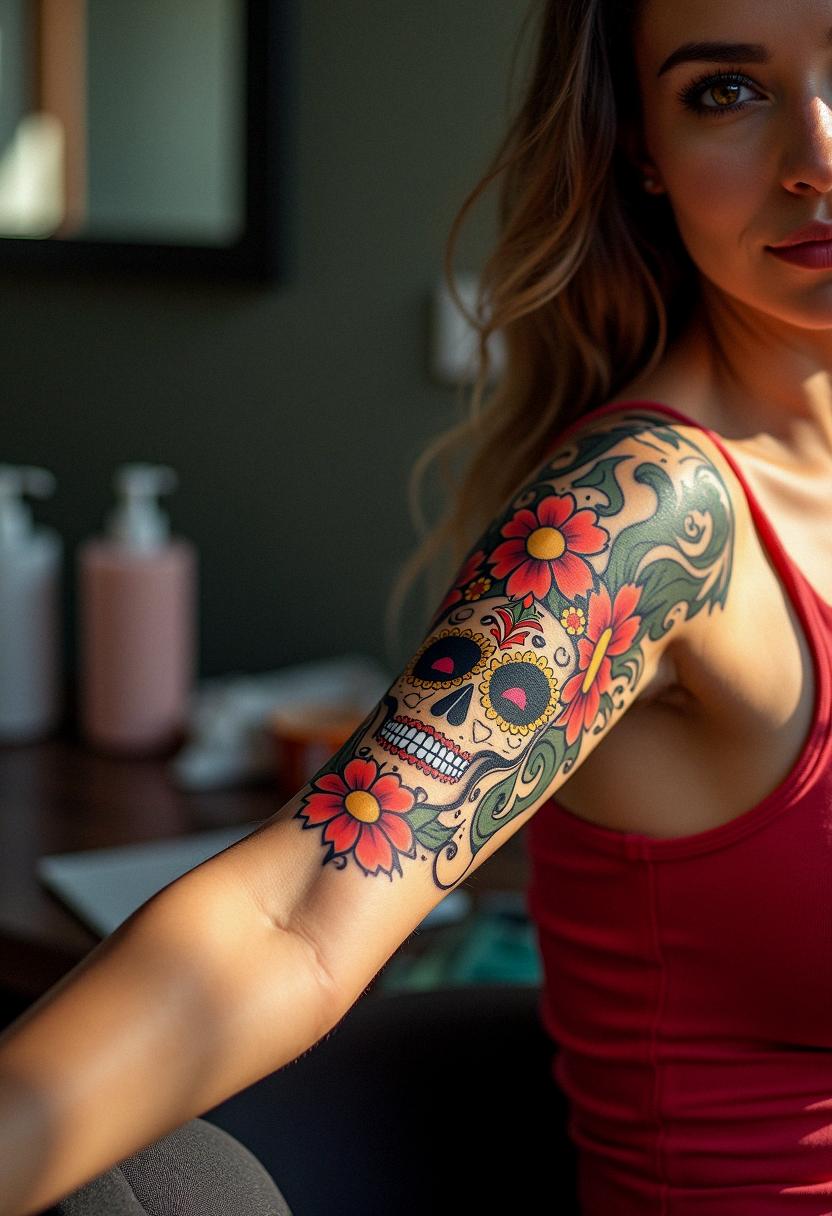
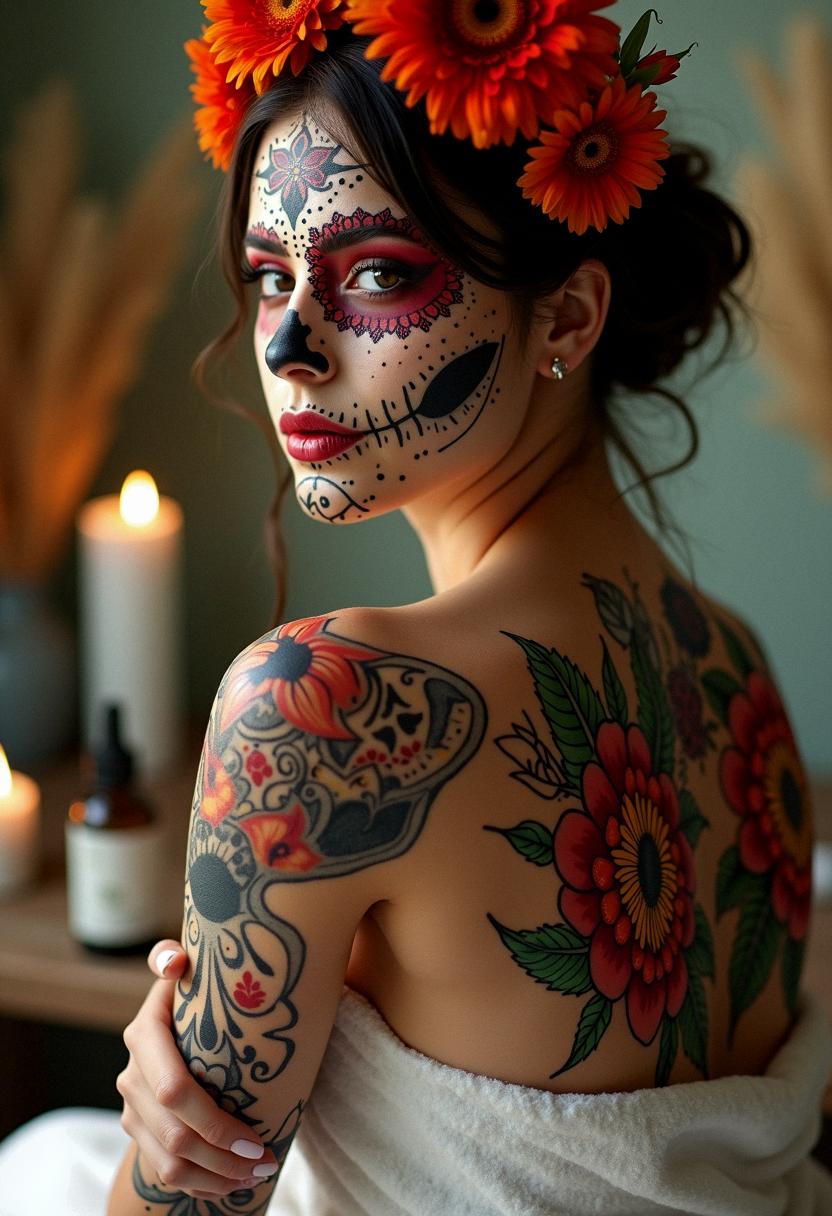
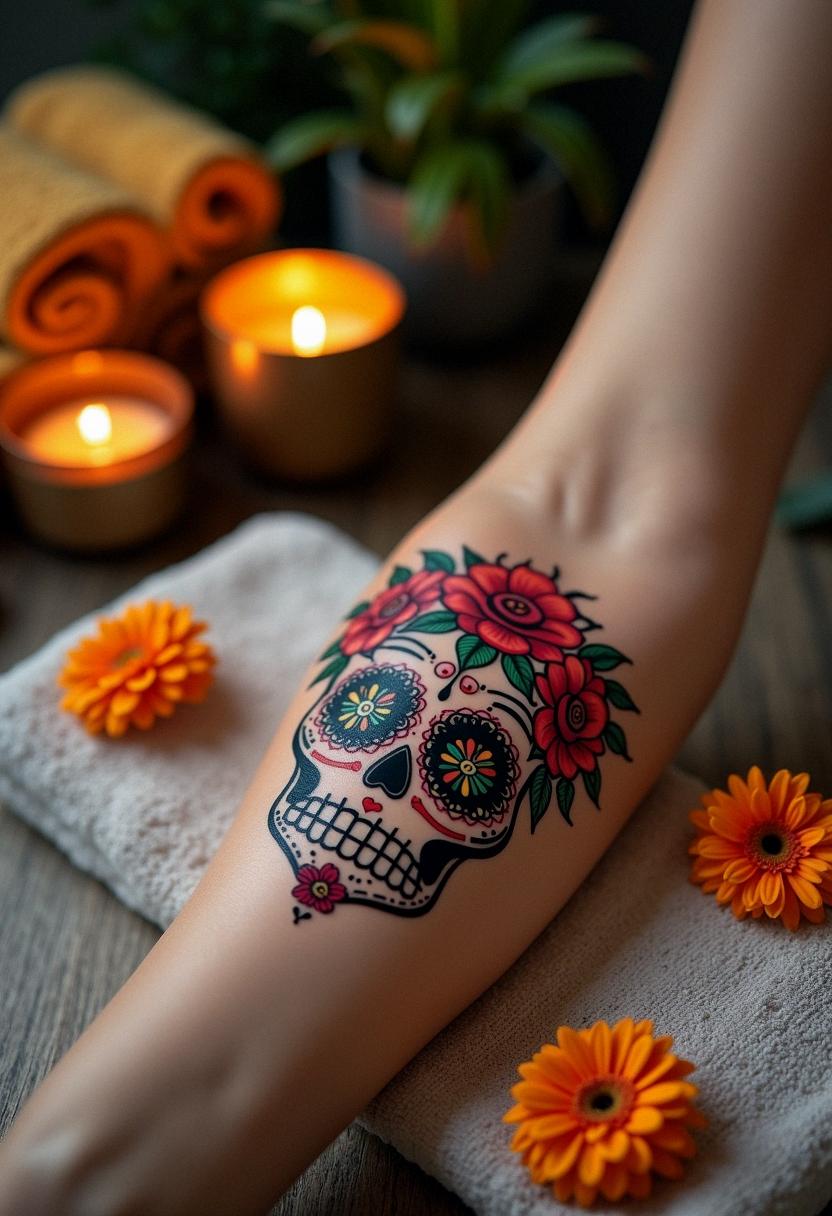
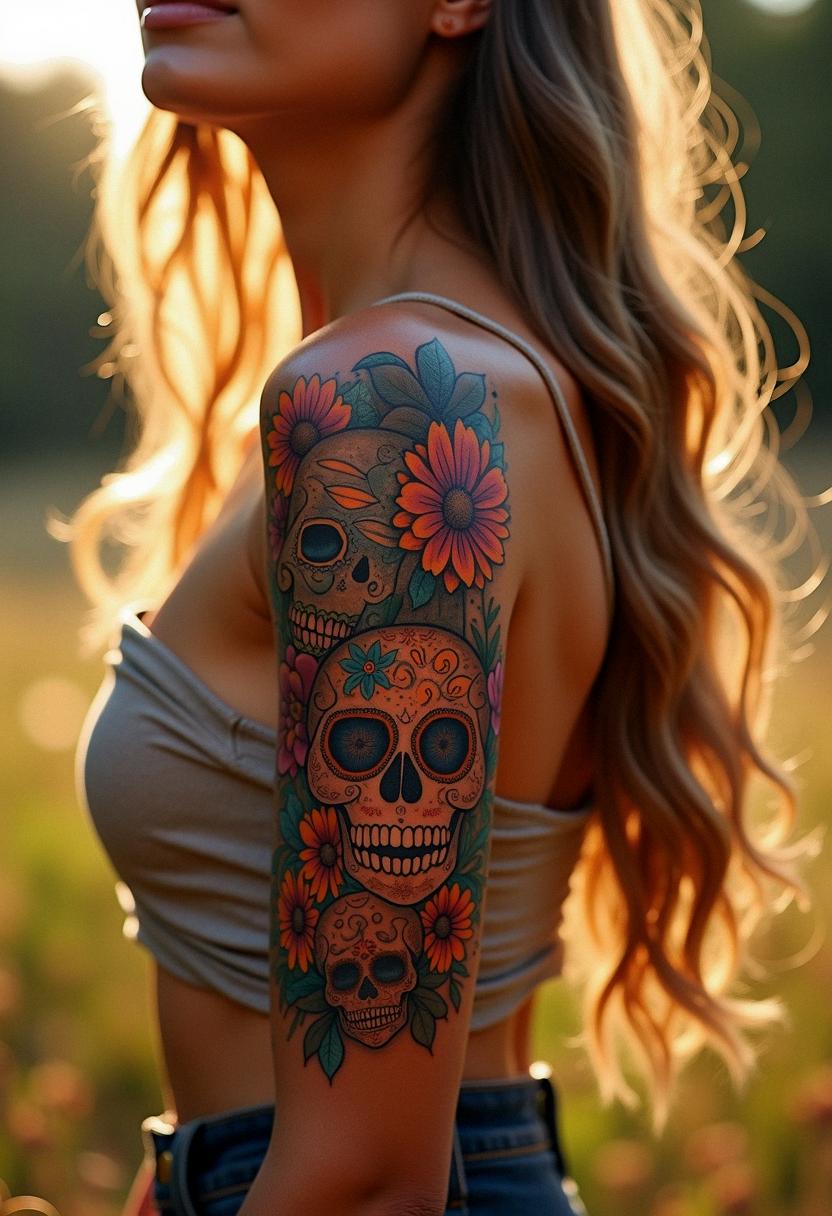
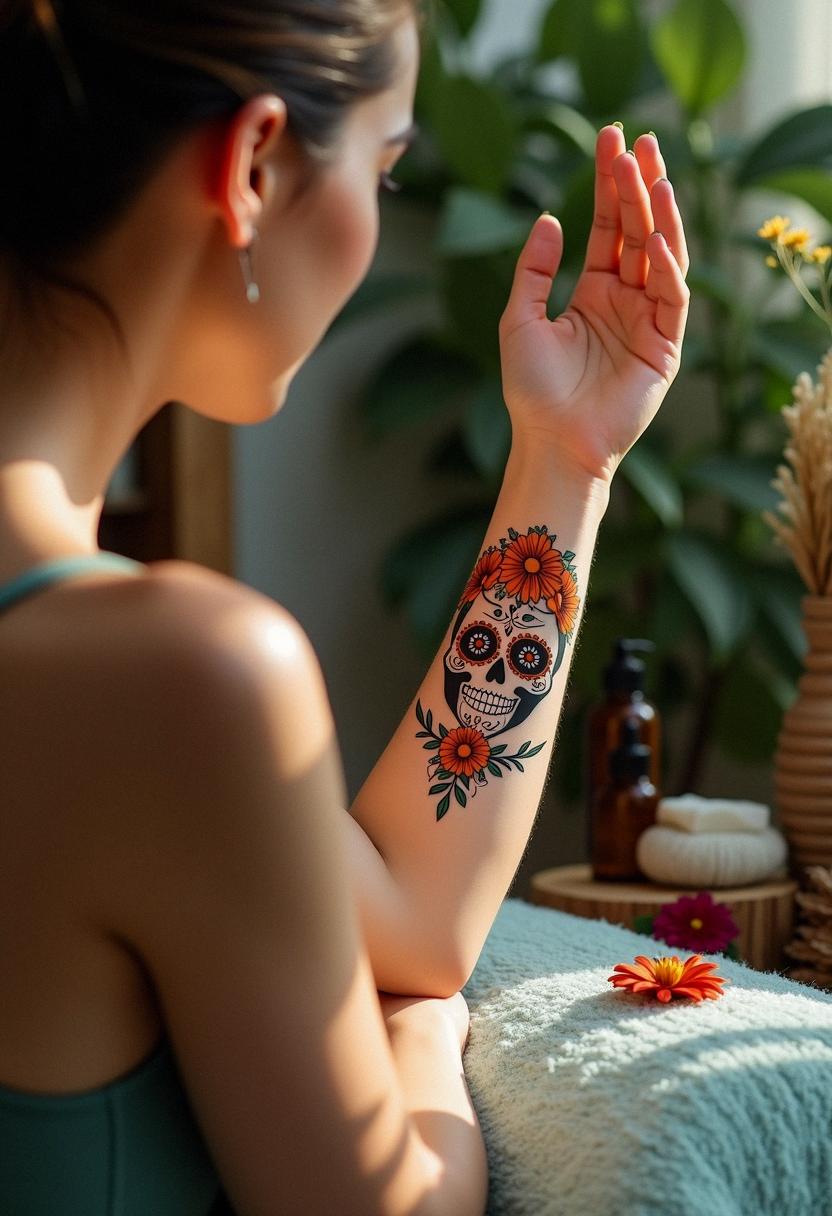
Conclusion and Reflections on the Impact of Day of the Dead Tattoos
Reflecting on the profound impact of Day of the Dead tattoos, it’s clear that this art form is much more than skin deep. These tattoos bridge personal histories with collective cultural memories, turning every design into a living narrative that honors both past and present. For many, each tattoo is a cherished emblem that celebrates life, acknowledges loss, and captures the eternal nature of remembrance. Over time, the impact of a Day of the Dead tattoo continues to evolve—it becomes part of your identity and a conversation starter that invites curiosity and shared stories. The creative journey, from conceptualization to aftercare, underlines the importance of cultural heritage and individuality in every design. Whether you’re drawn to the intricate details or the evocative symbolism behind the artwork, each tattoo stands as a testament to human resilience and the enduring spirit of celebration. It is a reminder that amidst life’s inevitable transitions, there is beauty in honoring every moment and memory. As you gaze at your tattoo, you’re not just looking at a piece of art on your skin; you’re embracing a rich narrative steeped in tradition, emotion, and personal expression—a vivid story that tells the tale of life, loss, and the steadfast power of remembrance in an ever-changing world.
